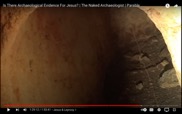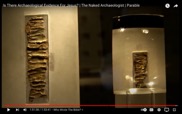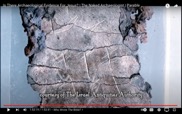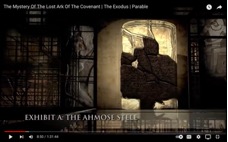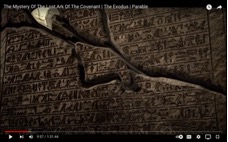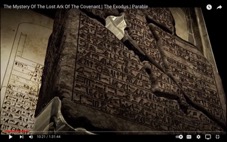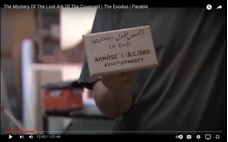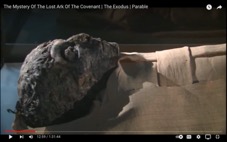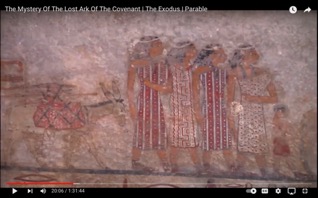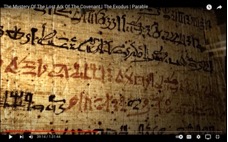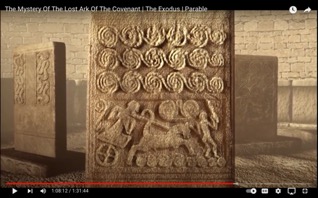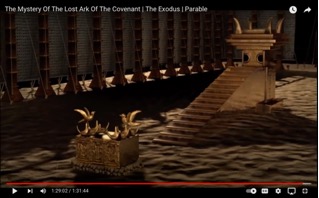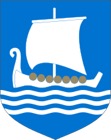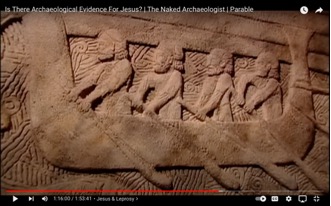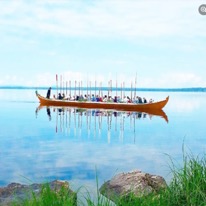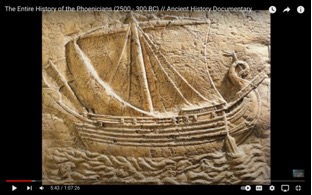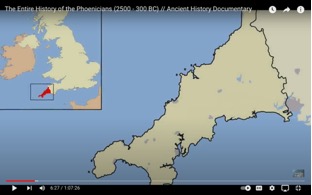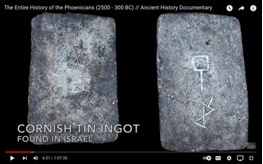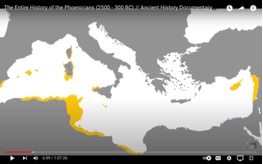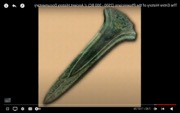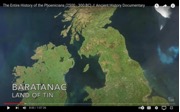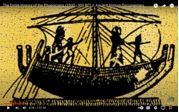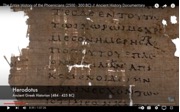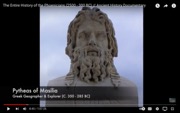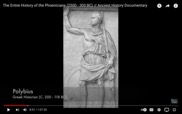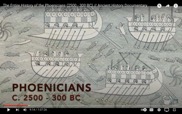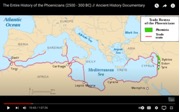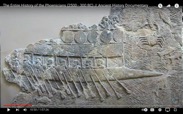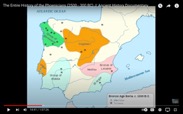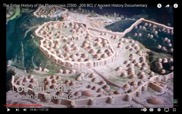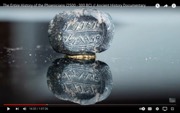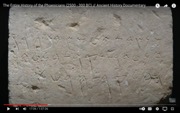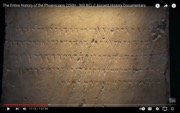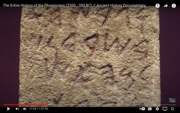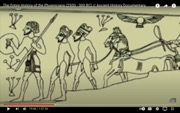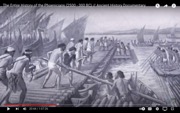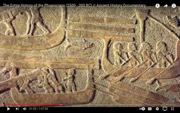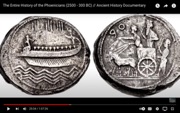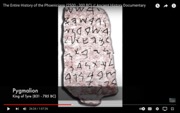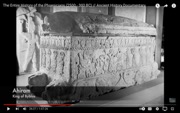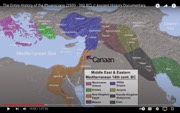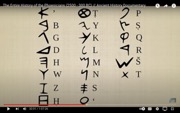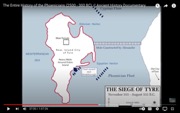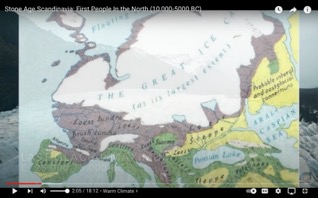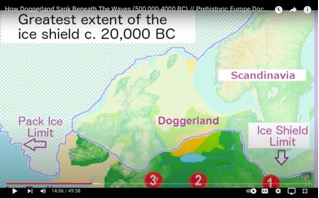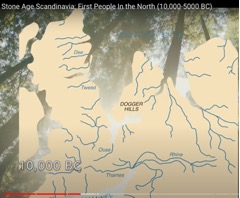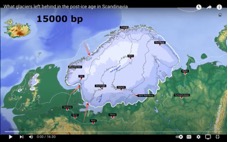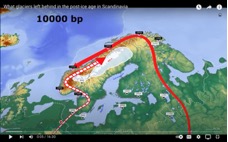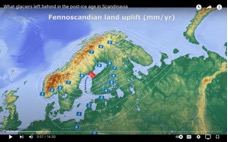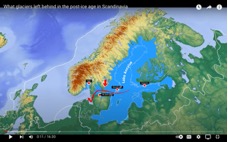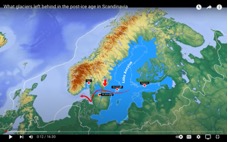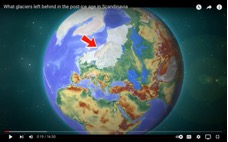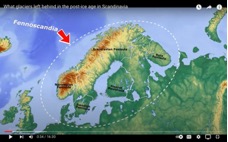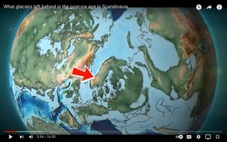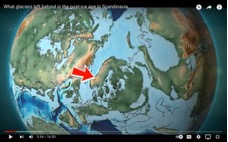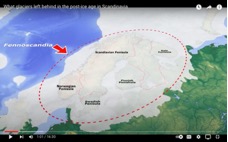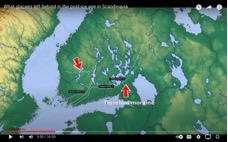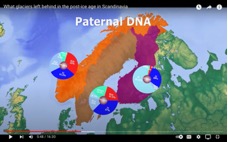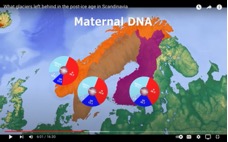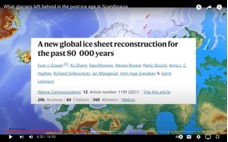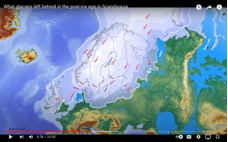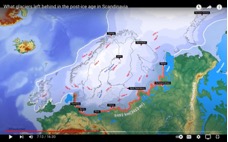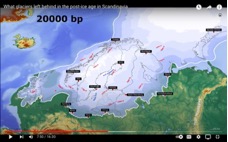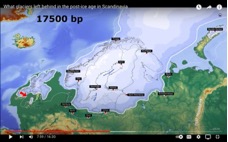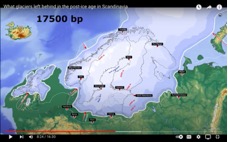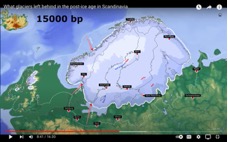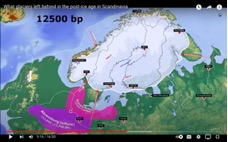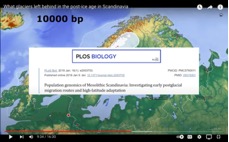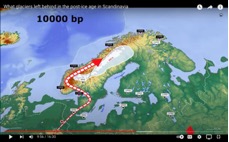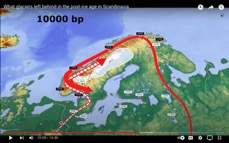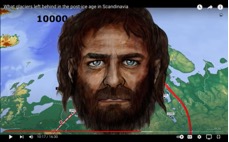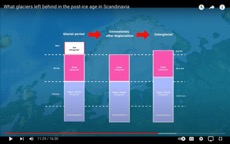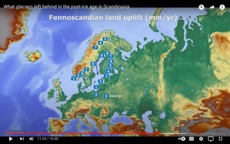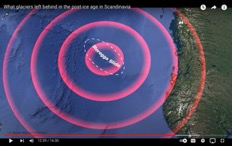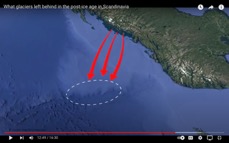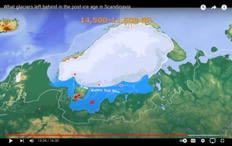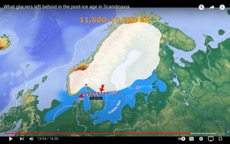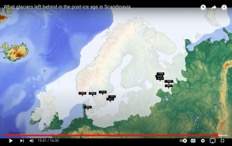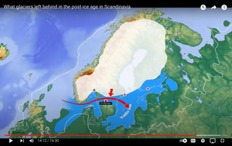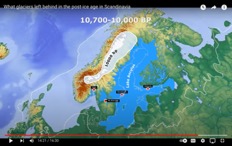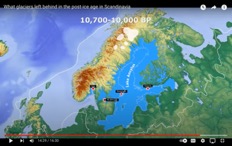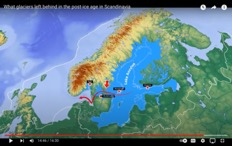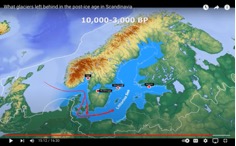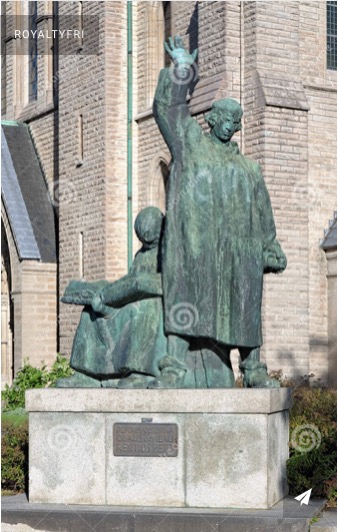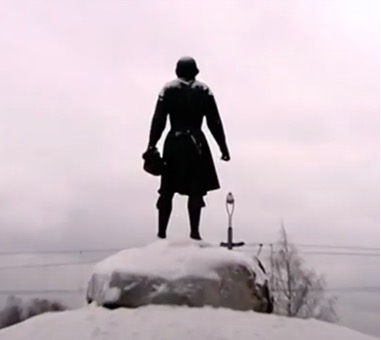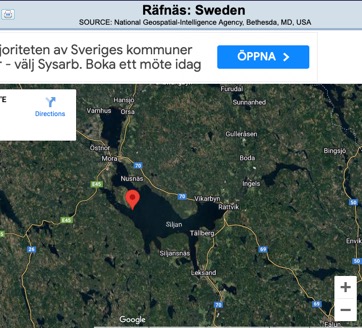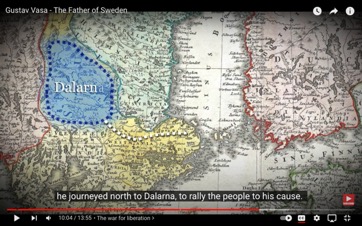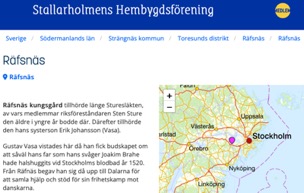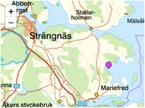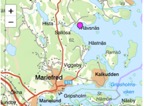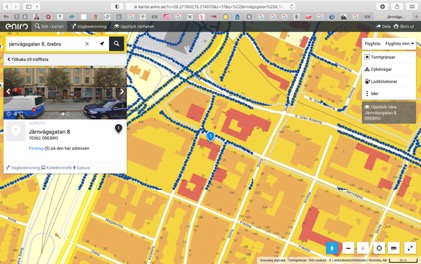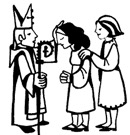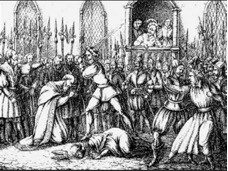Without recourse.
All Rights Reserved. Tree of Life©
Statement of belief: “Sanctify them
through thy truth: thy word is truth.”
(John 17:17 KJV)
. Please
notice the highlighted update links below!!
Created
5942[v2016-12-14-21:32] 12 21 - 01 12 2039 [sic! Cf. below!]
[2023-03-14 thru 2023-04-19]
Further
work and edits 5942[v2016-12-14-21:32] 01 23 2039 [sic! I changed my
evaluation of Abib… Observed two Feasts of Unleavened Bread this spring!]
[2023-05-12 eve]
Update
5942[v2016-12-14-21:32] 01 25 2039 [2023-05-15] – . Inquisition – the true backdrop of the
Stockholm Bloodbath vs. the Reformation..
Addition
5942[v2016-12-14-21:32] 01 29 2039 [2023-05-19] – . Added Statue of Gustav Eriksson in Mora..
Addition
5942[v2016-12-14-21:32] 02 03 2039 [2023-05-22] – . Added the Arnljot story from 1050 CE..
What are the Characteristics
of the 2023 Protestant Reformation?
-
Sola Scriptura & the Reformation in Sweden: 500 years ago… and NOW!
-
Please, Stop and Ask Yourself Sincerely!
Why
Reformation?
Why
Was/Is the Bible Central to a Reformation?
Why
Were/Are the Authorities Insisting on Hiding the Truths? [1]
If
Your Family Members are Suffering Due to Intentional Actions of Your
Authorities, Are They Doing Their Best to Let You Know the Real Truth, the Real
Causes?
If
You Knew That the Bible Can Help You Find the Insights You Need, Would You Wish
to Clearly Comprehend Those Bible Passages?
Why
Were the Reformers Who Translated the Bible into Local Languages, Luther,
Tyndale… Imprisoned, Even Burned to Death at the Stake?
Is
the Inquisition Alive and Well Today? Is the Inquisition Less or More Hidden
Today Than 500 Years Ago?
Is
Revelation 14:8 a Key to Finding the True Answers to the Above? And 18:4?
If
the True History of the Last 4,000+ Years Were Not Hidden, Would the Theory of
Evolution Still Stand?
Are
You Aware that the Last Ice Age Was Nothing but the Polar Ice Cap Centered Over
Hudson Bay in Canada Until 699 BCE?
Or
That the Ice Age Before That Was Nothing but the Polar Ice Cap Centered at the
Coast of Norway Until 1420± BCE?
If
You Realize That This Is True, Would You Still Believe Evolutionary Teaching?
More
Details Below…
Notice: 200+ years prior
to Luther - and prior to the Reformation!
The
earliest mentions of a Swedish Bible is noted in an inventory list for Magnus
IV of Sweden [1316-1374], where a "big volume Bible in
Swedish" is listed. A similar note is made for Bridget of Sweden [1303-1373]. Who translated those
Bibles?
Luther’s translation of the Bible
1534.
The first complete English Bible translation came in 1535.
Issued by Coverdale, an assistant to Tyndale. Tyndale translated parts of the
New Testament into English in 1526, and 1534.

Gustav
Vasa’s Bible 1540-1541
A Little Documentation of
Biblical History
As Discovered in Recent Years
A few sprinkles re the ancient root beginnings of the Reformation in Sweden
You may wish to read Ellen Erbes’
article Some
Highlights of the Luther Jubilee in Europe, in honor of Martin Luther’s 500th
birthday Nov 10, 1983. Ellen Erbes is a devoted SDA, and a scholar, committed
to the messages of our SDA pioneers and Ellen White! She has successfully carried out a campaign
against the use of the red Catholic hymnbook ‘Psalmer
och Sånger’ at the SDA
Church in Uppsala [Possibly the only such success among all SDA Churches in
Sweden!]. Her husband is a scholar focusing on studies of the Peshitta New
Testament scriptures. Wonderful people indeed!
(Notice – a shortcut: This link
will take you directly down to the time of Luther, Olavus & Laurentius
Petri, and King Gustav Vasa):
Original crucified
heel bone from a tomb in Jerusalem buried at the time of Jesus. It was found
in, or adjacent to, an ossuary labeled with Jesus’ Hebrew name, and in a family
tomb with ten ossuaries labeled with names such as are all likely the same as
the names of Jesus’s parents, siblings, and more… “In 1980, a bulldozer accidentally uncovered a first-century tomb in
Jerusalem. Of the ten ossuaries (stone coffins) found inside, six bore
inscriptions: Jesus son of Joseph, Maria, Mariamene (the name by which Mary
Magdalene was known), Joseph, Matthew, and Judah son of Jesus.”
[Shown also in WUP 163]
A tomb where
remains from a leprosy (verified diagnoses) victim was found.
(Some scholars deny
the possibility of leprosy disease existing at that time…)
Silver scroll 600
years older than the Dead Sea Scrolls, 1) Num 6:24-26, and 2) Deut 7:9.
The
Ahmose Stele. (Ahmose was the one who took Mose’s
place after Mose fled Egypt.)
Pharaoh Ahmose
Tomb
painting from c. 1700 BCE in Beni Hassan, Egypt, showing Israelite immigrants.
Notice the colorful dresses and their noses!
The
Ipuwer papyrus that describes the 10 plagues in Egypt.
Grave
stone on the island of Mycenae, Greece, depicting a scene from the parting of
the Red Sea.
Please
watch for 2 minutes beginning at this
link!
Is
this what the Ark of Covenant looks like?
Hidden, Forgotten, and Little Known
Ancient Scandinavian History
Many
important, yet hidden, and forgotten archeological discoveries from the grave
mounds in Sweden are reported in this book, printed in 1874:
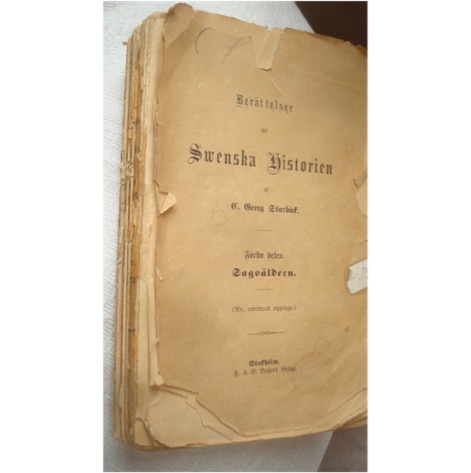

[English
translation of the book title: ‘Stories from the Swedish History’ by C. Georg
Starbäck; printed in the year 1874!]
The
Swedish book “Berättelser ur Swenska Historien”, af C. Georg Starbäck; Stockholm. F. & C. Beijers
förlag;
Printed
in Norrköping 1874 by M. W. Wallberg & Comp. Boktryckeri.
Notice!: Most English, German, and Swedish Reformation Bibles
are using the Gothic font,
same
as in the above Swedish book, which font may be difficult for most of us to
read today.
If
you take a mere 20 minutes out of your time and if you follow this link,
you
will quickly learn how to read and understand this font correctly.
In Sweden, 500 years prior to the
Reformation, another king proclaimed Christianity to his subjects. Translating
from the above book:
” When Olof [the Holy One, king of
Norway] in August of 1030 [CE] marched across the mountains [between Trondhjem in Norway and Jämtland in Sweden] into Norway and
counted his people in Werdalen, a man walked up to
him, whose appearance aroused everyone’s attention. While marching through
Hälsingland and Jämtland many men had attached themselves to Olof, but no one
among those was the like of this man who was now standing before him. He was so
tall and so powerfully built that no one in the king’s army, even among those
of great fame, stood above his shoulders. His beautiful hair and the manly
features of his face aroused everyone’s admiration. Above his hips he wore
chain mail and on his head he had an impressive
helmet. In his hand he held a great golden spear with a shaft so thick that
hardly anyone was able to grip his fingers around it. His shield was red, and
the sword at his side was of the most expensive artisanship.
“After greeting the king, the king
looked at him and then asked him his name and his origins, and from which
country he was come. “In Hälsingland and Jämtland” – said the man – “I have my
relatives, and my name is Arnljot Gelline.” – The King was happy finally to
meet Arnljot Gelline, but he asked him “In what God do you believe?” – “Thus
far” – said Arnljot – “I have trusted my own powers and strength, and have been
well in so doing. But now I would rather believe in you, O King.” Then the King said: “If you believe in me,
then you must also believe in that which I am teaching you, which is that Jesus
Christ has created heaven and earth and all people, and that to him will come
after death all people who are good and righteous”. Arnljot had some difficulty comprehending
this; he had heard about white Christ, but he knew nothing about his might, or
about the extent of his jurisdiction. The King then taught him about God’s
almighty powers and wisdom, after which Arnljot received his baptism. He fought
honorably at the confrontation at Sticklarstad where he succumbed [d. July 29, 1030 CE] in
front of the Kings insignia.
(From Swenska
Historien by C. Georg Starbäck, 1874, pp.
348-350)
In the above Swedish history book
from 1874, I read that - based upon the finds within said grave mounds - around
700 BCE people immigrated from the east into Scandinavia. These immigrating
people were quite tall in comparison to the Eskimo (the so called ‘Stone Age’)
people previously inhabiting the southern and western coast lines of
Scandinavia, at a time when most of Scandinavia was still largely covered by
glaciers. That is, in 700 BCE the land ice of the so-called Ice Age was still
covering much of Scandinavia - as evidenced also by ancient Arabic maps of
Scandinavia dated to c. 200 CE.
The culture, tools etc., of the
Eskimo people buried in said grave mounds are described as being identical to
those of the Eskimos on Greenland up until at least 1950. In contradistinction
said immigrants from the east were skilled artisans in the making of tools,
weapons, and art using bronze craftmanship (cf. “the Bronze Age”). These
immigrants arrived traveling in Viking ships reminiscent
of the ships
buried next to the pyramids in Egypt. The Church boats being used in
Dalarna, Sweden are also very much of the same design and architecture. These
immigrants from the east came from the Black Sea through the river Volga and
more. Another source reports that the traditional national dresses still being
used in Sweden today are very similar to those traditionally used within
Israel. Indeed, there are many characteristics indicating that Scandinavian
people are descendants from the ten tribes of Israel. (Notice: More pictures
and details at this link!
1:
Viking ship; 2: Ship at Giza, Egypt; 3: From the Hecht Museum in Haifa,
Israel; 4: A church boat on Lake Siljan at Rättvik, Dalarna, Sweden.
[Notice:
Click any photo within to see its source!]
“These
new ships carrying travelers from the east. They were different… had their
roots in Lebanon and Israel…”
(Follow
the links embedded in each picture to see, and to hear the quoted words)
“Evidence
of travelers from the Levant has been found all along the Mediterranean and
beyond…”
“Tin…
a rare metal… one of the main components of bronze making… Still mined… in Baratanac, the Land of Tin…”
Click the embedded
links within the pictures for more detail! Also, the quoted words below are
from some of these video pictures…
”As early as 445 BC
Herodotus speaks of the British Isles as the Tin Islands… The Greek explorer
Pytheas of Masilia, writer of the now lost earliest account of the North
Atlantic mentioned the tin trading… Polybius… Diodorus… as early as 1500 BC…
The Phoenicians…” Tin mines of 1500 BC Iberia (Spain)... “The walled Copper Age
metropolis Los Millares c. 3200-2300 BC… Canaan writing [ancient Hebrew]… There
is no known instance of a
Phenician ever calling themselves a Phenician or any other collective term…
they describe themselves in terms of their individual names and cities…[Notice
the large noses and the evidence
of circumcision!]… Why did they call
themselves Phenicians?... They didn’t… It’s a Greek word… a dye… may have had
red hair… ? Their origin… Baalbek
Lebanon… immense size
[from the
time of Solomon’s building activities]… King Ahiram of Byblos… [2 Sam
5:11; 1 King 5:1-12; 7:13-45; 9:11-27; 1 Chr 14:1; 2 Chr 4:11]… 22 letter alphabet… The Siege of Tyre…”
Important, but Forgotten – or Hidden -
Background
For Better Understanding
the Migrations of the 10 Tribes Taken Captives by the Assyrian King
Around 700 BCE. That is,
the Roots of Some of the Scandinavian People:
Until the pole shift of around
1420± BCE the
North Pole was located about 100 km west of the Norwegian coast (just below
the ‘g’ in “Floating Ice” in the above first (left) map). After said pole shift
of 1420± BCE the above Ice Cap would have been diminishing quite rapidly until
the pole shift of 699/698 BCE, after which it would have continued to diminish
at a considerably slower rate. As you can see in the map above, the southern edge
of the land ice (commonly known as the ‘Ice Age’) is forming a half circle
around the point of said North Pole location near the Norwegian coast. No doubt
there would have been floating ice over most of the ocean within the other half
of said circle at that time. The above may be a fairly accurate map showing the
Ice Cap around the North Pole at the time of Joshua’s Long Day around 1420±
BCE, some 3,450 years ago.
Atomic
Time vs. Solar Time
Documented
Decay of the Speed of Light
Causes
Decay
in the Ages Reported by Atomic Clocks
18
Billion Atomic Years = 6,000± Solar Years

Title page.
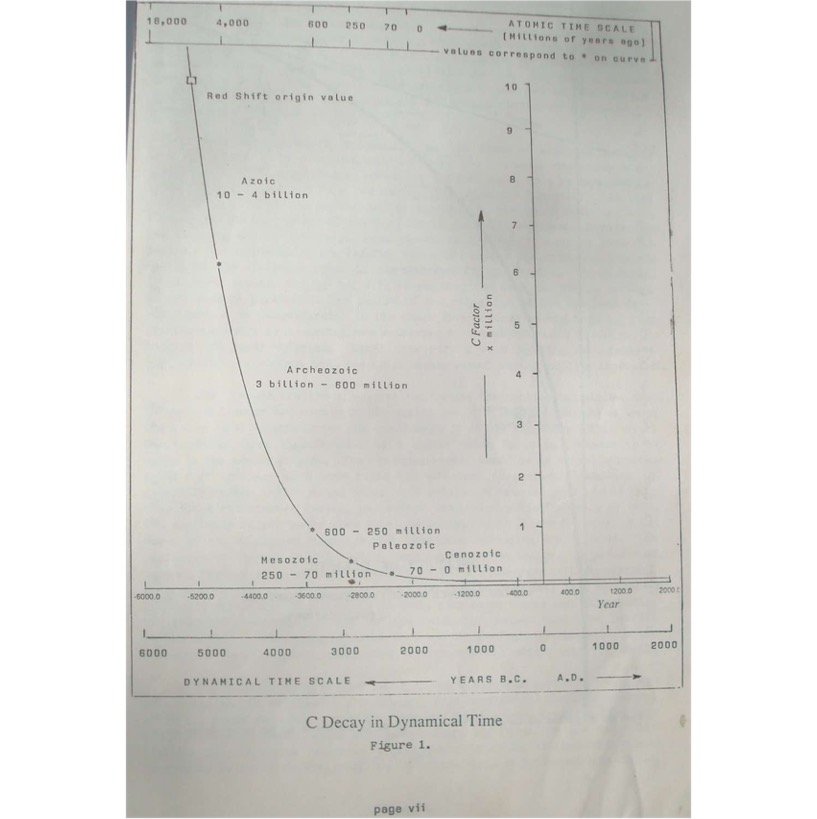
Conversion of
Radioactive Decay years into Solar Years.
Notice in
particular that Noah’s Flood (2345± BCE) corresponds to 70 million Atomic
years!
This is useful for
a better comprehension of the thousands and millions of years typically
referenced by such as are still being fooled by evolutionist teaching.
Please remember
this when looking at the BC dates provided in the “Ice Age” maps below!
This is based upon
the fact that c, the speed of light, has decayed over time, and is not constant
as commonly taught!.
For more details,
please consider the research report below:
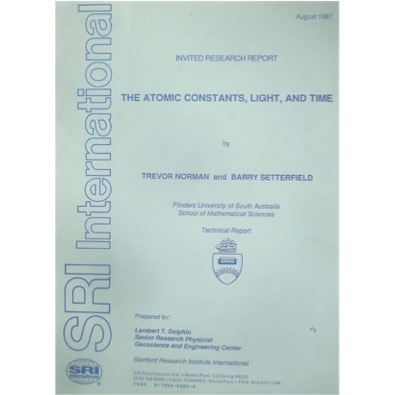
Title page of Stanford
Research Report.
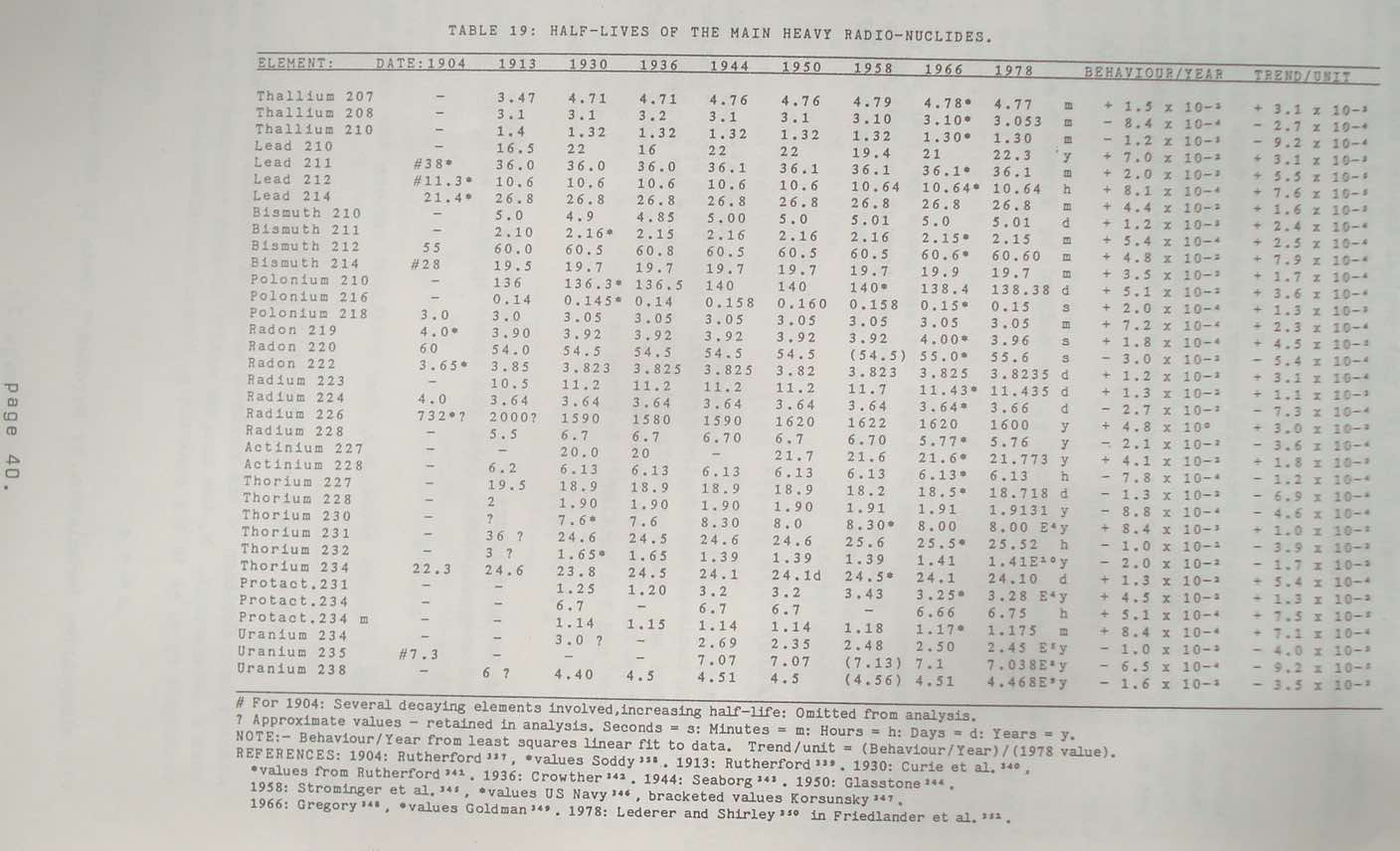
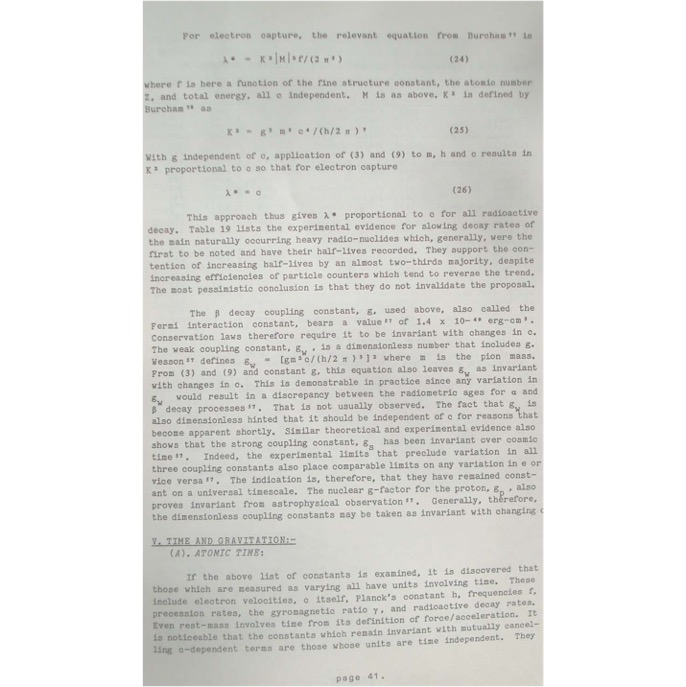
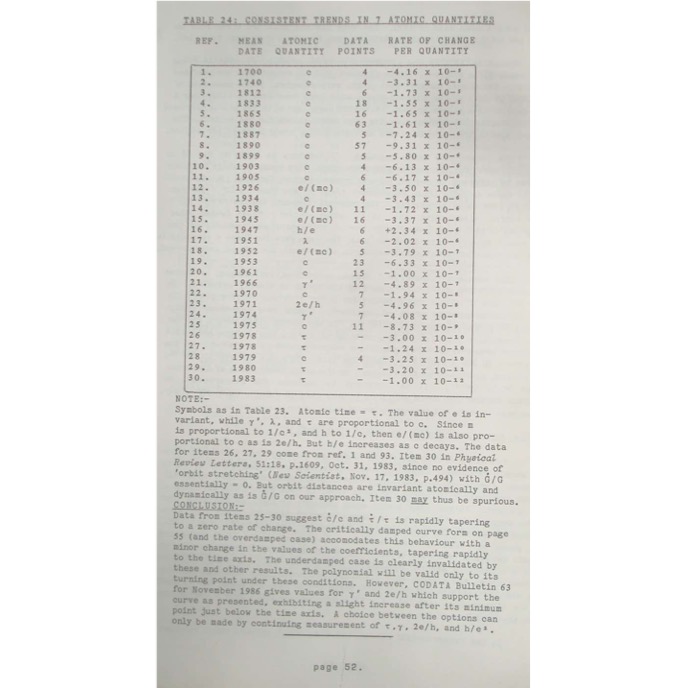
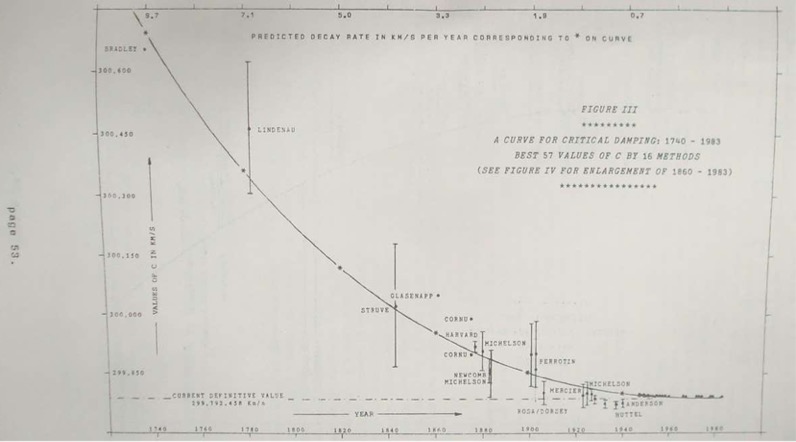
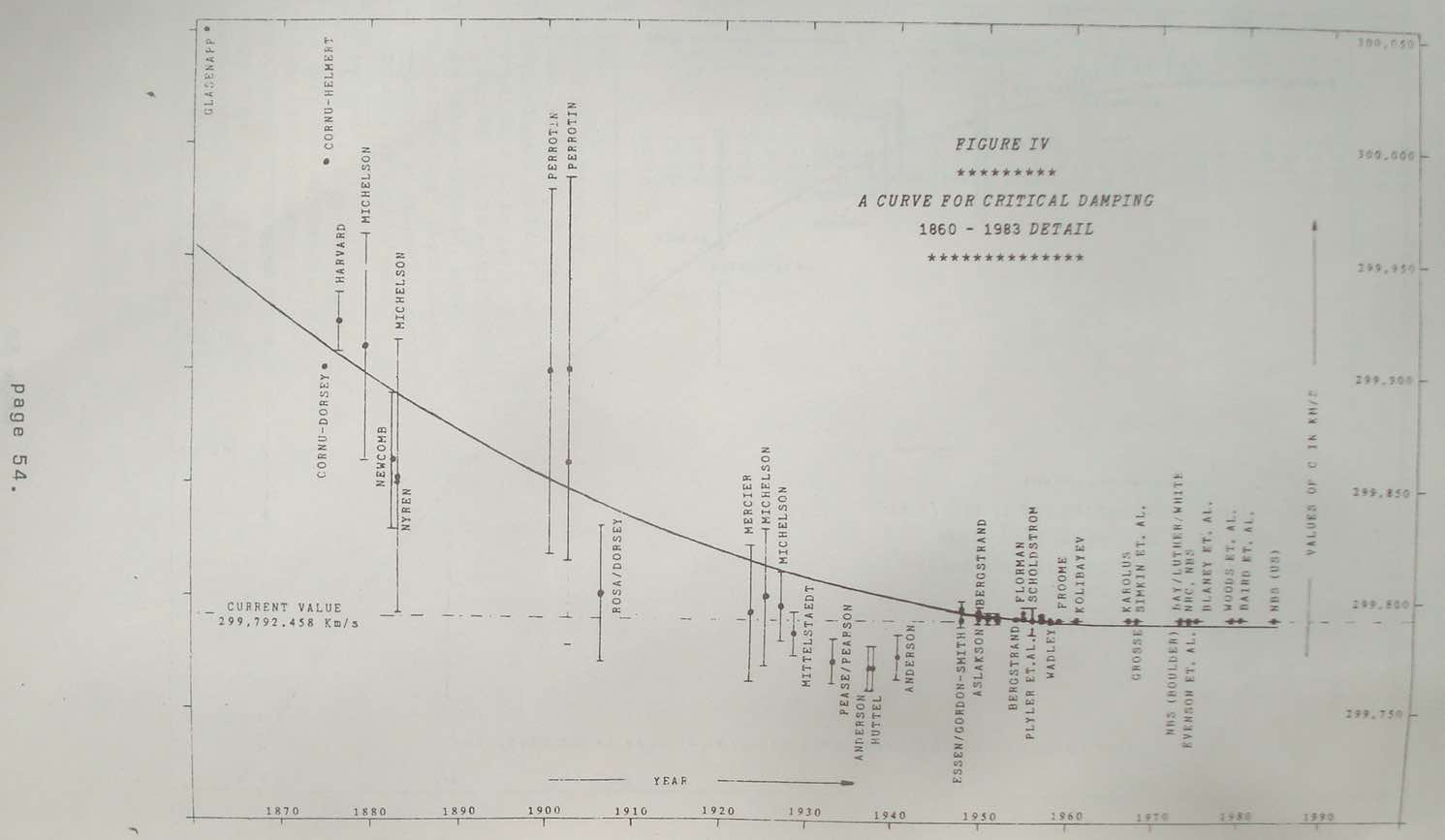
The above diagrams
show how the measurements of the speed of light have decreased since the
earliest known measurements in 1700 CE.
The
Polar Ice Cap [of the Last Ice Age]
Rapidly
Melted Off Following the Long Day of Joshua in 1420± When
Scandinavia
Was Located Much Closer to the Equator
At Between 40 and 50 Degrees Latitude
Until
699/698 BCE When Scandinavia Moved to its Present Latitude:
More
Details Under This
Link, Please!
The coordinate
system as it was from1420± BCE until the year 699/698 BCE.
(Notice: Only
the crust of the Earth moves at the time of a pole shift! The crust of the
Earth is comparable to the shell of an egg, only much thinner)
The
Melt Off of the Pre-1420± BCE Ice Cap
In
the Years Since 1420± BCE:
The above map mirrors the extent
of the so-called Ice Age that covered northern Europe. That is, the land ice
covering the polar cap prior to the Pole Shift that took place around 1420 BCE.
The enormous weight of said land ice depressed the Earth’s crust at that time,
including most of all the red area above, and extending from there through the
blue area within the above map. That is, more so closer to the North Pole of
pre-1420 BCE. As the immense weight of said ice covering disappeared over the
subsequent centuries, the entire area that had previously been depressed was
now lifted up, like an empthy soup dish floating upon
the melted magma underneath. This would initially have allowed the melting
waters from those inland glaciers to flow eastward towards the Black Sea and
the Caspian Sea, which seas may even have extended, around 700 BCE, as far as
to the present Bothnic Sea area. Eventually however, as those ice masses
disappeared, the crust of Earth covering that entire area was slowly lifted up
such that the blue areas in the above map effectively dammed up the Bothnic Sea
depression in the middle until the predominant outlet of the Bothnic Sea was
towards the west south west direction, presently through Öresund between
Denmark and Sweden. Given more time, eventually only the red areas in the above
map continued to rise, as they still do, thus diminishing the central lifting
power and causing the surrounding blue areas to slowly sink downwards again
towards the initial pre-ice, and pre-polar, non-depressed, flat land it once
was.
Accordingly, the immigrant
Vikings from the East around 700 BCE may well have been able at that time to
travel by ship all the way back and forth between the present day Bothnic Sea
and the Black Sea. Then, gradually, as the ice disappeared and as the land
slowly rose up along the present-day watershed between the Bothnic Sea and the
Black Sea areas, and as the Vikings’ established travel routes required from
time to time, the Vikings adapted, by whatever means, to get their ships across
the resulting watershed-embankment between the Baltic Sea basin and between the
Black and Caspian Sea basins.
Notice, please, that said events
around 700 BCE were concurrent with the capture of the 10 tribes out of Israel,
and their displacement throughout the Assyrian kingdom. The Assyrian kingdom at
that time reportedly extended all the way to the headwaters of the river Volga,
which headwaters at that time, as we may recognize from the above said, were
likely extending to the Bothnic Sea! Re the bronze used extensively by those
eastern immigrants, please remember also the abundance of metals available
during the time of Solomon around 1000 BCE! 1 Kings 10:21; 2 Chronicles 9:20;
Ezra 8:27.
Somewhere [?] I remember reading
also that, at the time when Ansgar brought Catholic “Christendom” to Sweden (in
the 9th century CE), the “heathen” people inhabiting the deep woods
of Scandinavia were keeping the Seventh Day Sabbath. Apparently, their
conversion to ‘Christendom’ involved changing their Sabbath keeping habits from
the Seventh Day to the First Day [of the week.][2]
That is, in accord with the Sunday Laws introduced May 7, 538 CE by the 3rd
Council of Orléans, a synod of the Roman Catholic Bishops of France. [Cf. the
time line diagram within this
link!]
the Reformation in Sweden
Further
reading:
EGWwritings.org: Establishment of Protestantism
in Sweden
The Swedish Roman Catholic
background history:
1.
Ansgar,
Apostle of the North – c. 800 CE
The
Olavus and Laurentius Petri statue
at Storgatan 40, Örebro
The three foremost men
of the
Reformation in Sweden were:
1.
Olavus Petri,
b. 1497, his brother
2.
Laurentius
Petri Nericius, b. 1499, and
3.
the nobleman Gustav
Eriksson of the Vasa noble family, b. May 12, 1496, in
whose commemoration the Vasaloppet
ski marathon was established in 1922. That is, Vasaloppet was in fact
established as a 400 year memorial of Protestanism being introduced into Sweden. Gustav Eriksson deposed the Danish King
Christian II in 1520, became king June 6, 1523, and in 1531 he appointed Laurentius
Petri as archbishop (disregarding the decree of the Pope).
[Incidentally, I notice that May
12 was also the date when Jesus
was crucified in 19 AD (sic!), and the date when I was married to my wife
Laurie in 1984. Cf. also the numbers five and twelve as used in Mark 8:19 and
John 6:13!]

Vasaloppet, the 90 km marathon ski race that began Sun
Mar 19, 1922.
This marathon is run annually on the first Sunday in
March.
Statue of Gustav
Eriksson in Mora, Dalarna.
[The linked
video is in Swedish only, but provides a valuable view of the unfavorable
characteristics of Gustav, and of each of his sons as successors to the
throne.]
Location of Gustav Vasa’s family estate at Räfnäs
in Dalarna, Sweden [??], OR...
…did he travel
to Dalarna from the coast at Norrtälje as
suggested on this map [??], or…
from Räfsnäs near Strängnäs to gain support for himself?
Please read this part of Gustav
Vasa’s story (written
as a trilogy++) to discover your answer!
And don’t miss the ++ part
conclusion! – A call to the 500 year midsummer jubilee in 2023!
A Few More Details Re Each One of Said
Three Men of the Reformation in Sweden
1.
Olavus Petri [Lat.
for 'Olof Petersson] was born in Örebro 1497, was the son of a local
blacksmith, Peter Olofsson & Kristina Larsdotter. He, and his brother Lars
learned to read and write at a local Carmelite
monastery in Örebro [A few remains of said Carmelite monastery were
still
extant in the late 18th century.]
Örebro c.
1700 AD. Notice the building labeled ’Curia’! Could this building possibly be
said Carmelite monastery?
Please
consider the parallels to the prominence of the University of Örebro, and SÖ, the Swedish Educations Authority!
Using a
drone or two, you could probably verify whether or not this is true.
1928 building at the site of the old Carmelite
monastery.
Present appearance, and location, of the old Carmelite
monastery.
Olavus
then studied theology and German at the University of Uppsala, and later
attended the University of Leipzig until 1516, and then at the University of
Wittenberg (in 1517; the same year when on Oct 31, 1517 Martin Luther nailed
his 95 theses to the Church in Wittenberg) where he, Olavus, received his
Master's degree in Feb, 1518. While in Wittenberg with his younger brother
Lars, he met with and was influenced by Philipp Melanchthon and Martin Luther, under
whom Olavus and Laurentius studied. On his return to Sweden in 1519, he and
his brother nearly died in
a shipwreck at Gotland during a storm. Later, because he expressed his
outrage against the proceedings leading up to the Stockholm Bloodbath, Olavus
was nearly killed at the Stockholm Bloodbath of Nov 7-9, 1520, that was initiated by the Danish
King Christian II, but was saved by a German friend. The massacre in Stockholm
provoked the Swedish War of Liberation, aka. Gustav Vasa's Rebellion, in which
the nobleman Gustav Vasa deposed King Christian II, ending the
Union of Kalmar (1397) between Sweden, Norway, and Denmark.
Olaus Petri’s Wedding Reformed Sweden (married Christina Mikaelsdotter February 12, 1525)
As
also the wedding of
Martin Luther (June 13, 1525) [pictured above with his wife, born Katharina von Bora.]
Please
read the linked
article, which article emphasizes the key role
of the family for the roots of the Reformation! (Notice the importance of the husband-wife
foundation! Gen
1:27. That is, in contradistinction to the celibacy edict of the
Roman Catholic Church, and the unavoidable consequences thereof upon the
sanctity of family relationships. For instance, by means of the Roman Catholic
rite of confession of sins before priests taking advantage of such secret
private meetings. Yes, both for their own sexual gratification, and, on behalf
of the Roman Catholic Church, for purposes of blackmailing, oppression, and
control.)
2. Laurentius
Petri Nericius [Lat. for
'Lars Petersson from the Närke landscape'] was born in Örebro 1499, and, with his
brother Olavus, he returned to Sweden in 1519 after studying in Wittenberg,
Germany, where he received his Master's degree Feb 10, 1515. On his return to
Sweden in 1519, he and his brother nearly died in a shipwreck at
Gotland during a storm. Later Laurentius and Olavus were nearly killed at the Stockholm Bloodbath of Nov 7-9, 1520, that was initiated by the Danish
King Christian II, but were saved by means of a German friend. God truly knows
how to protect His own! Laurentius was betrothed to Elizabeth Didriksdotter Sept 23, 1531.
3. Gustav Vasa, born Gustav Eriksson of the Vasa
noble family on May 12, 1496, married Catherine of Saxe-Lauenburg in 1531.
“Gustav Vasa was a son of Erik
Johansson, one
of the victims of the executions at the Stockholm Bloodbath. Vasa, upon hearing of the
massacre, travelled north to the province of Dalarna to seek support
for a new revolt. The population, informed of what had happened, rallied to his
side. They were ultimately able to defeat Christian's forces in
the Swedish War of Liberation. ” (Wikipedia)
The Stockholm Bloodbath Nov 7-9, 1520
Two video summaries re that event: Links 1 & 2. More below!
Today’s Stortorget, Gamla Stan, in Stockholm where the Bloodbath
occurred.
As Stortorget appeared in 1798.
The Inquisition constitutes the true and very real backdrop
of the Stockholm
Bloodbath,
as also the backdrop
of the abundant executions along King Christian II’s coronation ride through
Sweden (Sw.: ‘Eriksgatan’):
1. For a better
comprehension of said backdrop, you may wish to take some three hours or so, in order
to realize for yourself the extent to which these types of bloodbaths were being systematically carried
out at this particular time (around the time of the Reformation) throughout all
of Europe and wherever the Roman Catholic Church and the Vatican was in power.
That is, wherever people allowed themselves to blindly contribute to the
suicidal machinery of the Church and the State. Indeed, the very same things we
see – or fail to see! - around us today, 500 years later! Why do we fail to
learn from our own mistakes? And from history?
The Stockholm
Bloodbath history - A few alternative brief videos:
1. The Stockholm
Bloodbath (only) 1 min 17 sec
2. 8th November 1520: Stockholm Bloodbath begins under
Denmark's Christian II 2 min 55 sec
3. Quill & Ink
History
a. Part 1: War of
Liberation - From the Kalmar Union (1397-1523) 13 min 55 sec +
b. Part 2: Builder of Empire - The reign of Gustav Vasa (1523-1560) 16
min 10 sec +
c. The (Forgotten)
Swedish History Before the Swedish Empire (1560-1630) 17 min 35 sec +
d. Denmark’s
Brutal Crusades in Estonia 7 min 55 sec
4. The 1397 Kalmar Union
Roots – 8 min
00 sec
5. (Swedish only)
– The 1397 Kalmar Union… - 5 min 40 sec
6. (Swedish only)
– This 2 part video has several valuable additional
points of view – 12 min 24 sec
(1492-1520) + 43 min 57 sec (1520-1611)
The following is an excerpt from an
article at this link. It outlines the course of events with a focus upon
the designs and actions of Gustaf Eriksson, aka. Gustavus Vasa, and
towards the success of the Reformation in Sweden – as also of the Reformation
in Denmark and Norway:
”Religion and patriotism were brought into serious conflict, and, given only a
capable leader who would know how to conduct his campaign with skill, it was
not difficult to foresee the results of such a conflict.
”As it
happened, such a leader was at hand in the person of Gustaf Eriksson, better
known as Gustavus Vasa. His father had been
put to death in the massacre of Stockholm, and he himself when a youth had been
given as a hostage to the King of Denmark. He made his escape and fled to Lubeck, where he was kindly received, and
remained until an opportunity arose for his return to Sweden. He placed himself
immediately at the head of the party willing to fight against Denmark, called
upon his countrymen to rally to his standard, and in a short time succeeded in
driving the Danish forces from Sweden. He was proclaimed administrator of his
country in 1521, and two years later a national Diet assembled at Strengnas
offered him the crown.
”Such an offer
was in exact accordance with his own wishes. But he had no intention of becoming
king of Sweden merely to remain a tool in the hands of the spiritual and lay
lords as the kings of Denmark had remained. Determined in his own mind to make
himself absolute ruler of Sweden by crushing the bishops and barons, he
recognised that Luther's teaching, with which he was familiar owing to his stay
at Lubeck, held out good hopes for the success of such a project. The warm
attachment of the Bishop of Upsala for the Danish faction had weakened the
devotion of the people to the Church, and had prepared the way for the change
which Gustavus contemplated. Some of the Swedish ecclesiastics, notably the
brothers Olaf and Laurence Peterson, both students of Wittenberg, the former a
well-known preacher at Stockholm, the latter a professor at Upsala, were strongly
Lutheran in their tendencies, and were ready to assist the king. Though in his
letters to Rome and in his public pronouncements Gustavus professed himself to
be a sincere son of the Church, anxious only to prevent at all costs the spread
of Lutheranism in his dominions, he was taking steps secretly to encourage his
Lutheran supporters and to rid himself of the bishops and members of the
religious orders from whom he feared serious opposition. As was done elsewhere,
he arranged for a public disputation at which Olaf Peterson undertook to defend
the main principles advocated by Luther, but the results of the controversy
were not so satisfactory for his party as he had anticipated.
”Gustavus now threw off the mask of hypocrisy, and came forward boldly as the
champion of the new religion. He removed those bishops who were most outspoken
in their opposition, banished the Dominicans who stood loyal to Rome, and tried
to force the clergy to accept the change. Anxious to enrich his treasury by
confiscating the wealth of the Church he scattered broadcast Luther's pamphlet
on the confiscation of ecclesiastical property, and engaged the professors of
the University of Upsala to use their efforts to defend and popularise the
views it contained. A commission was appointed to make an inventory of the
goods of the bishops and religious institutions and to induce the monasteries
to make a voluntary surrender of their property. By means of threats and
promises the commissioners secured compliance with the wishes of the king in
some districts, though in others, as for example in Upsala, the arrival of the
commission led to scenes of the greatest violence and commotion. More severe
measures were necessary to overawe the people, and Gustavus was not a man to
hesitate at anything likely to promote the success of his plans. Bishop
Jakobson and some of the clergy were arrested, and after having been treated
with every species of indignity were put to death (1527).
”In this year,
1527, a national Diet was held at Vesteras principally for the discussion of
the religious difficulties that had arisen. Both parties, the supporters of the
old and of the new, mustered their forces for a final conflict. Gustavus took
the side of the so-called reformers, and proposed the measures which he
maintained were required both in the interests of religion and of the public
weal. The Catholic party were slightly in the majority and refused to assent to
these proposals. Gustavus, though disappointed at the result, did not despair.
He announced to the Diet that in view of its refusal to agree to his terms he
could undertake no longer the government and defence of the country. A measure
such as this, calculated to lead to anarchy and possibly to a new subjugation
of the country by Denmark, was regarded by both sides as a national disaster,
and secured for the king the support of the waverers. The masses of the people
were alarmed lest their opposition might lead to the restoration of Danish
tyranny, while the support of the nobles was secured by the publication of a
decree authorising them to resume possession of all property handed over by
their ancestors to religious institutions for the last eighty years. The
remainder of the possessions of the Church were appropriated for the royal
treasury. The king now issued a proclamation in favour of the new religion,
insisted on the adoption of a liturgy in the vulgar tongue, and abolished
clerical celibacy. At the National Assembly of Orebro
(1529) [at the Örebro
Castle] the Catholic religion was
abolished in favour of Lutheranism, and two years later Laurence Peterson was
appointed first Lutheran Archbishop of Upsala.
”Though the Lutheran teaching had been accepted, great care was taken not to
shock the people by any violent change. Episcopal government of the Church was retained;
most of the Catholic ritual in regard to the sacraments and the Mass was
adopted in the new liturgy, and even in some cases the pictures and statues
were not removed from the churches. But the revolution that Gustavus had most
at heart was fully accomplished. The authority of the Pope had been overthrown,
and in his place the king had been accepted as the head of the Swedish Church.
Nor did the Lutheran bishops find themselves in the enjoyment of greater
liberty and respect as a result of their treason to the Church. Gustavus warned
them that they must not carry themselves like lords, and if they would attempt
to wield the sword he would know how to deal with them in a summary manner.
Resenting such dictation and tyranny they began to attack Gustavus in their
sermons and to organise plots for the overthrow of his government. The
conspiracy was discovered (1540). Olaf and Laurence Peterson, the two prominent
leaders of the reforming party, were condemned to death, but were reprieved on
the payment of a large fine. Laurence was, however, removed from his position
as Archbishop of Upsala. In the Diet of Vesteras in 1544 the crown of Sweden
was declared to be hereditary, and was vested in the family and heirs of
Gustavus. Thus the well- considered policy of Gustavus was crowned with
success. By means of the Lutheran revolt he had changed the whole constitution
of the country, had made himself absolute master of Sweden, and had secured the
succession to the throne for his own family.”
Another interesting item from the life and action of Gustav Vasa is his
building of a bastion with
a number of cannons aimed at the home of the archbishop in Uppsala and at
the Cathedral in Uppsala…
The archbishop residence at gunpoint
under King Gustav Vasa
Feel free to use, and for sharing freely with others, any of the truth
and blessings belonging to God alone. I retain all the copyrights to the
within, such that no one may lawfully restrain my use and my sharing of it with
others. Including also all the errors that remain. Please let only me know
about those. I need to know in order to correct them. Others don’t need to be
focused upon the errors that belong to me alone. Please respect that, and
please do not hesitate to let me know of any certain error that you find!
Without recourse.
All Rights Reserved. Tree of Life©







